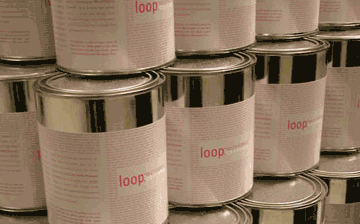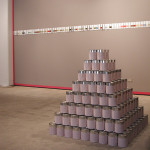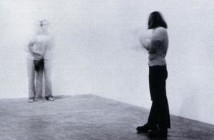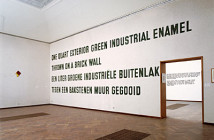MARKETWATCH
Within the Blogosphere of art, I cannot count the number of times in the last week I’ve read some version of the phrase “the tanking of the economy will refocus the art world on interesting ideas as opposed to sales.” Sentiments like these set up an unnecessary binary between the lofty ideal goals of “proper artist practice” and the gloomy, vulgar workings of commerce. Perhaps more than anything, this column seeks to identify economic motivated works of art and distinguish them from the unfortunate and disingenuous conflict of interest between art and money. This time around I propose that in a floundering economy a focus on economic ingenuity is the best artists can do to contribute to the ideals of art. Starting with innovation and sustainability as a prerequisite for art making is one way to show resistance, or at least one’s reaction, to a tanking economy. The following project exemplifies an economic approach that portrays the workings of commerce and art making as inextricably linked.
People Powered, a business model and “brand identity” conceived by Chicago artist Kevin Kaempf, was launched as a means to create small-scale public art and sustainable projects involving recycling and “green” ideals. Divorced from its “hippy” connotations and presented in more corporate and contemporary graphics, People Powered’s recycling outlines the way for profit and sustainable business practice. In “Loop Limited”, leftover half-used paint that accumulates in virtually every garage across America is seen by PP not as waste, but as opportunity for profit. In the touring exhibition “Beyond Green”, for every venue that exhibited “Loop”, leftover paint was gathered by the institution and mixed according to the artists’ instructions. Walls were painted with the new found colors and the newly mixed paint (which inevitably leads to undiscovered colors) was then canned and branded with the People Powered graphics.
What is striking about People Powered is how it maintains an aesthetic level of corporate branding and slick professionalism, while essentially remaining a one-man operation. I do not have any stats that speak of profit levels or sales of “Loop Limited”, or of People Powered in general, however, his model seems more than sustainable. For “Loop Limited” to turn a profit (let alone an “interesting” profit) he first needs to find as many cans of leftover paint as possible without spending much money to do so. While it seems logical that many would be grateful to rid themselves of paint they’ll never need, finding these people and hauling their cans away takes, at a minimum, excessive amounts of time to track them down and a pick-up truck. The ingenious decision to filter this project through the art world rids the entrepreneur of this burden. An added bonus is that museum's (where People Powered has most often shown) generally has a large network and a constituent that wants to contribute. I can imagine many enthusiastic participants delivering their old cans to a museum, feeling good for their part in the recycling chain, but also, being an integral part of the artistic process. In essence, People Powered is utilizing the art world’s penchant for all things “relational” or “social.” Indeed, Nicolas Bourriaud's notion of relational aesthetics never seemed to account for economic factors involved in any art exhibition, but he did help create the necessary framework for smart-minded artists like Kevin Kaempf to find it.
In this miraculous project, the integral part of the artistic process serves as the precise same role as the economic one. Perhaps I like this work so well because People Powered is “powered” by the engine and outreach of the museum, yet it does not take this outreach as a good, in and of itself, but rather shows how it can be economically stimulating. How one defines the success of “Loop Limited” is wholly dependent on how one defines success in different categories of circulation. Maybe the status of this small-scale enterprise depends almost solely on the amount of times museums decide on its inclusion. Or, perhaps People Powered will take the newly minted cans of latex paint, the outsourced labor it received from the museum and find a sustainable model outside of the museum. Art that is indifferent to the art world is often a good thing, and it seems wonderfully poetic that “Loop Limited” possesses an air of freedom, where the art world may be a place of origin, but not necessarily a final destination.
- People Powered, Loop Limited: Recycled Paints, recylced paint, cans, graphics, detail view of stacked cans.
- People Powered, Loop Limited: Recycled Paints, installation view.
"Beyond Green: Toward a Sustainable Art" as on view at the Ronna and Eric Hoffman Gallery of Contemporary Art at Lewis and Clark College from September 11-December 7, 2008.
All images are courtesy of the artist.






